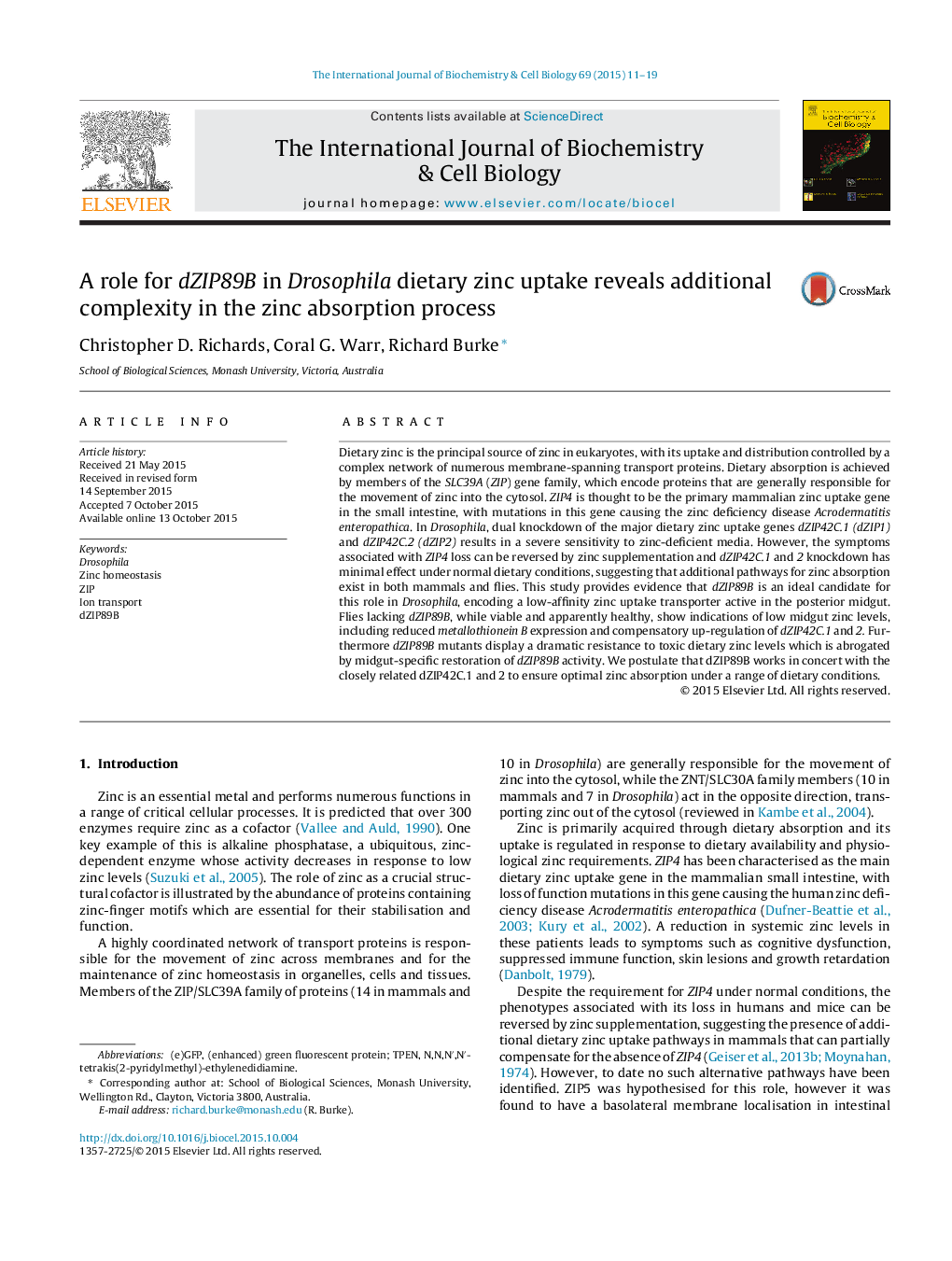| Article ID | Journal | Published Year | Pages | File Type |
|---|---|---|---|---|
| 8322446 | The International Journal of Biochemistry & Cell Biology | 2015 | 9 Pages |
Abstract
Dietary zinc is the principal source of zinc in eukaryotes, with its uptake and distribution controlled by a complex network of numerous membrane-spanning transport proteins. Dietary absorption is achieved by members of the SLC39A (ZIP) gene family, which encode proteins that are generally responsible for the movement of zinc into the cytosol. ZIP4 is thought to be the primary mammalian zinc uptake gene in the small intestine, with mutations in this gene causing the zinc deficiency disease Acrodermatitis enteropathica. In Drosophila, dual knockdown of the major dietary zinc uptake genes dZIP42C.1 (dZIP1) and dZIP42C.2 (dZIP2) results in a severe sensitivity to zinc-deficient media. However, the symptoms associated with ZIP4 loss can be reversed by zinc supplementation and dZIP42C.1 and 2 knockdown has minimal effect under normal dietary conditions, suggesting that additional pathways for zinc absorption exist in both mammals and flies. This study provides evidence that dZIP89B is an ideal candidate for this role in Drosophila, encoding a low-affinity zinc uptake transporter active in the posterior midgut. Flies lacking dZIP89B, while viable and apparently healthy, show indications of low midgut zinc levels, including reduced metallothionein B expression and compensatory up-regulation of dZIP42C.1 and 2. Furthermore dZIP89B mutants display a dramatic resistance to toxic dietary zinc levels which is abrogated by midgut-specific restoration of dZIP89B activity. We postulate that dZIP89B works in concert with the closely related dZIP42C.1 and 2 to ensure optimal zinc absorption under a range of dietary conditions.
Related Topics
Life Sciences
Biochemistry, Genetics and Molecular Biology
Biochemistry
Authors
Christopher D. Richards, Coral G. Warr, Richard Burke,
